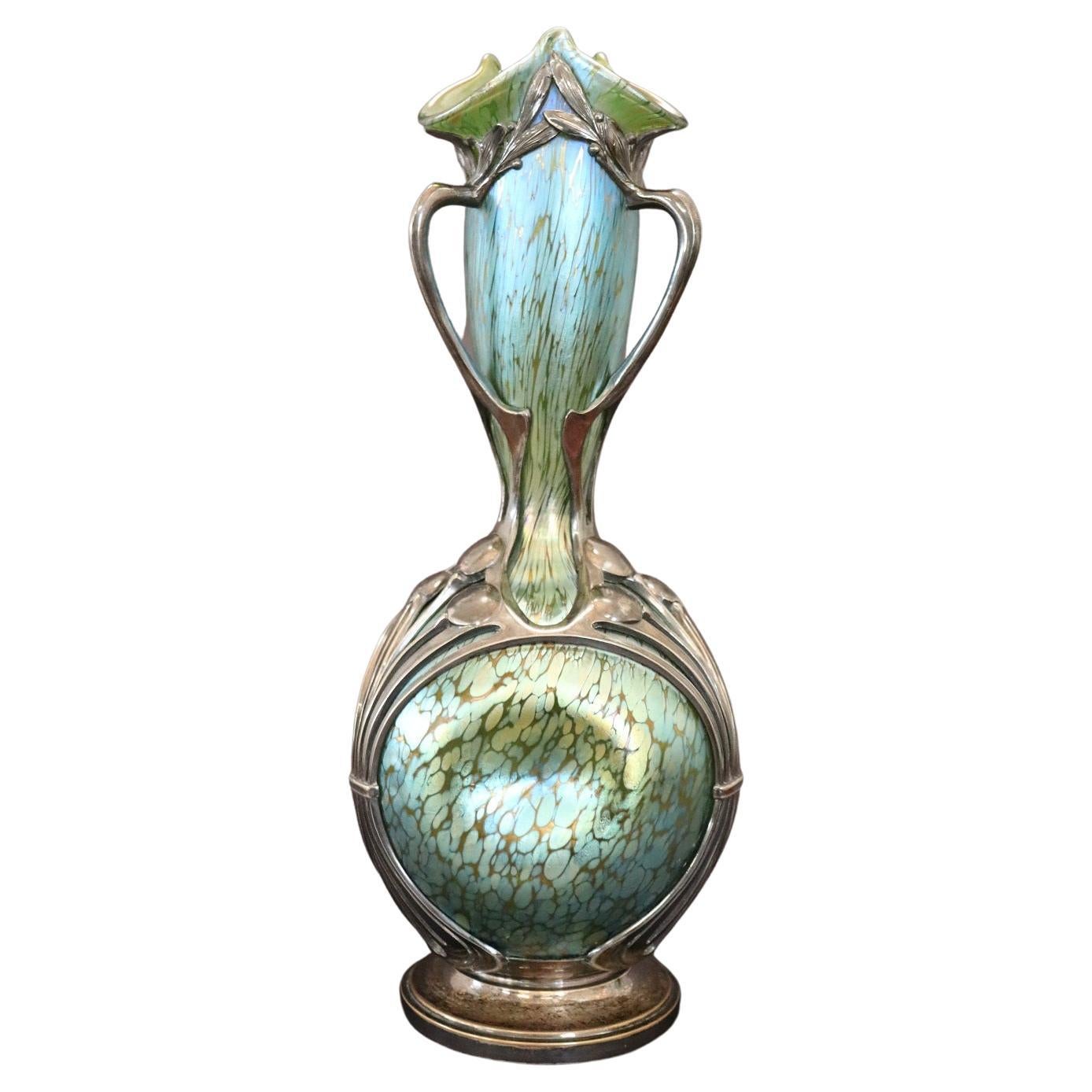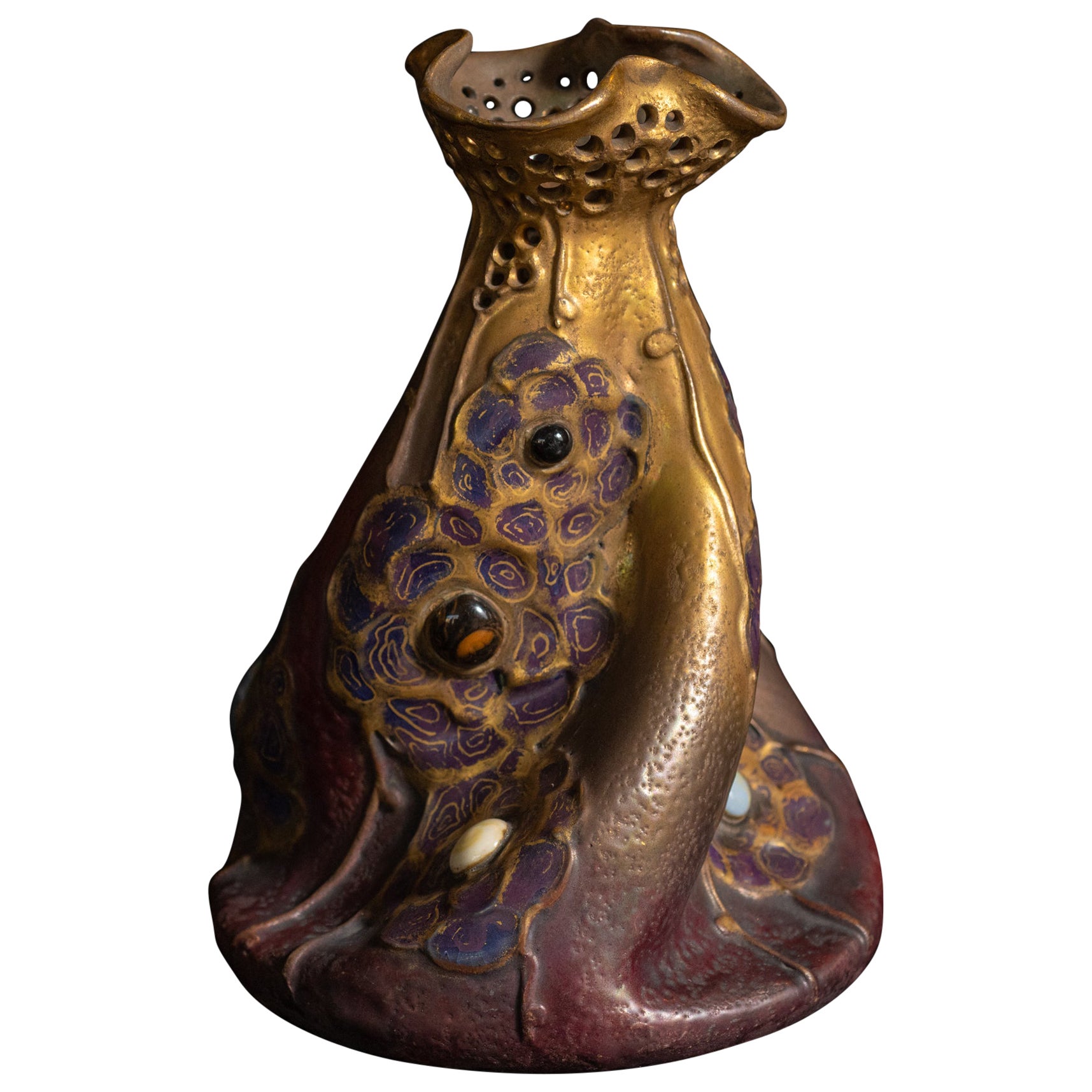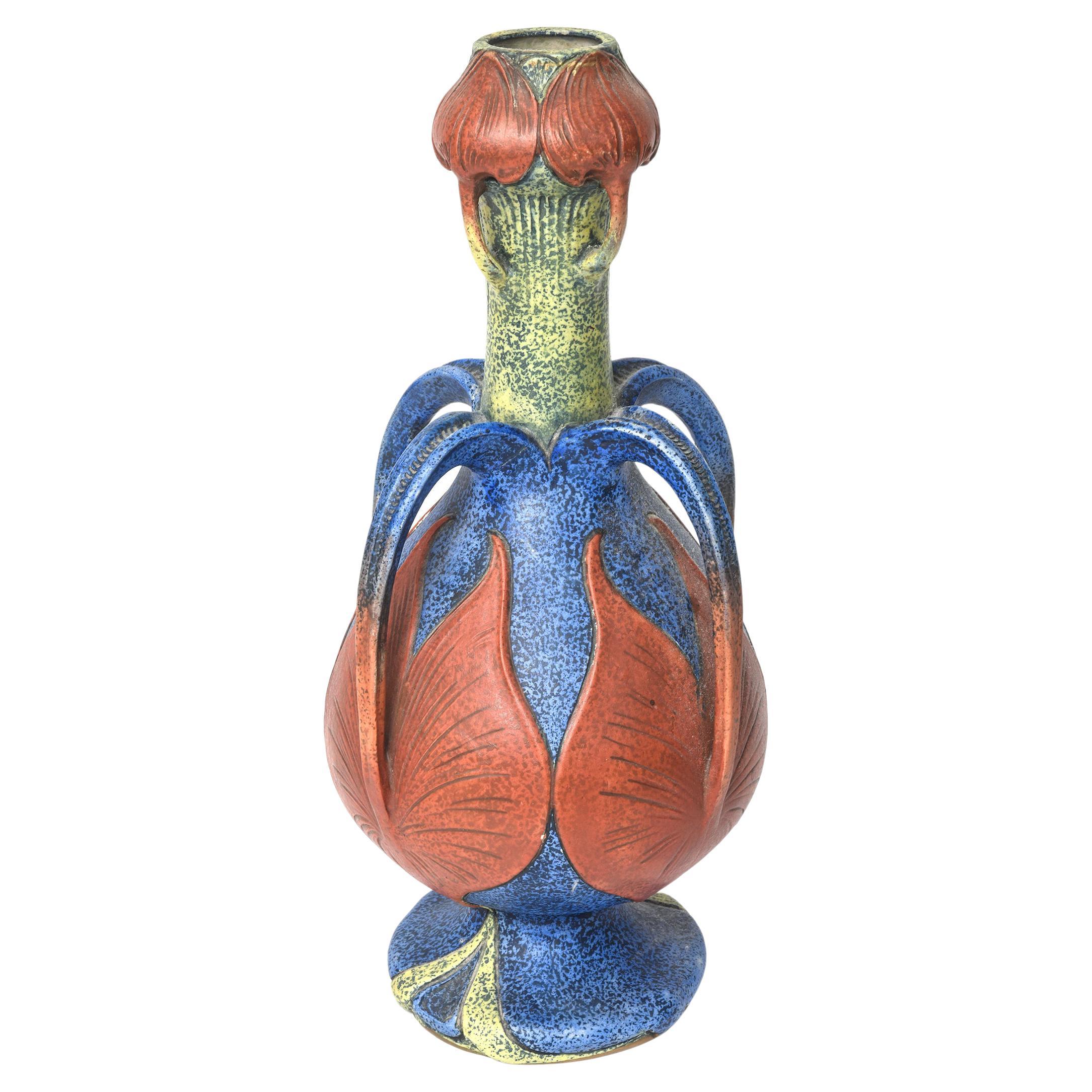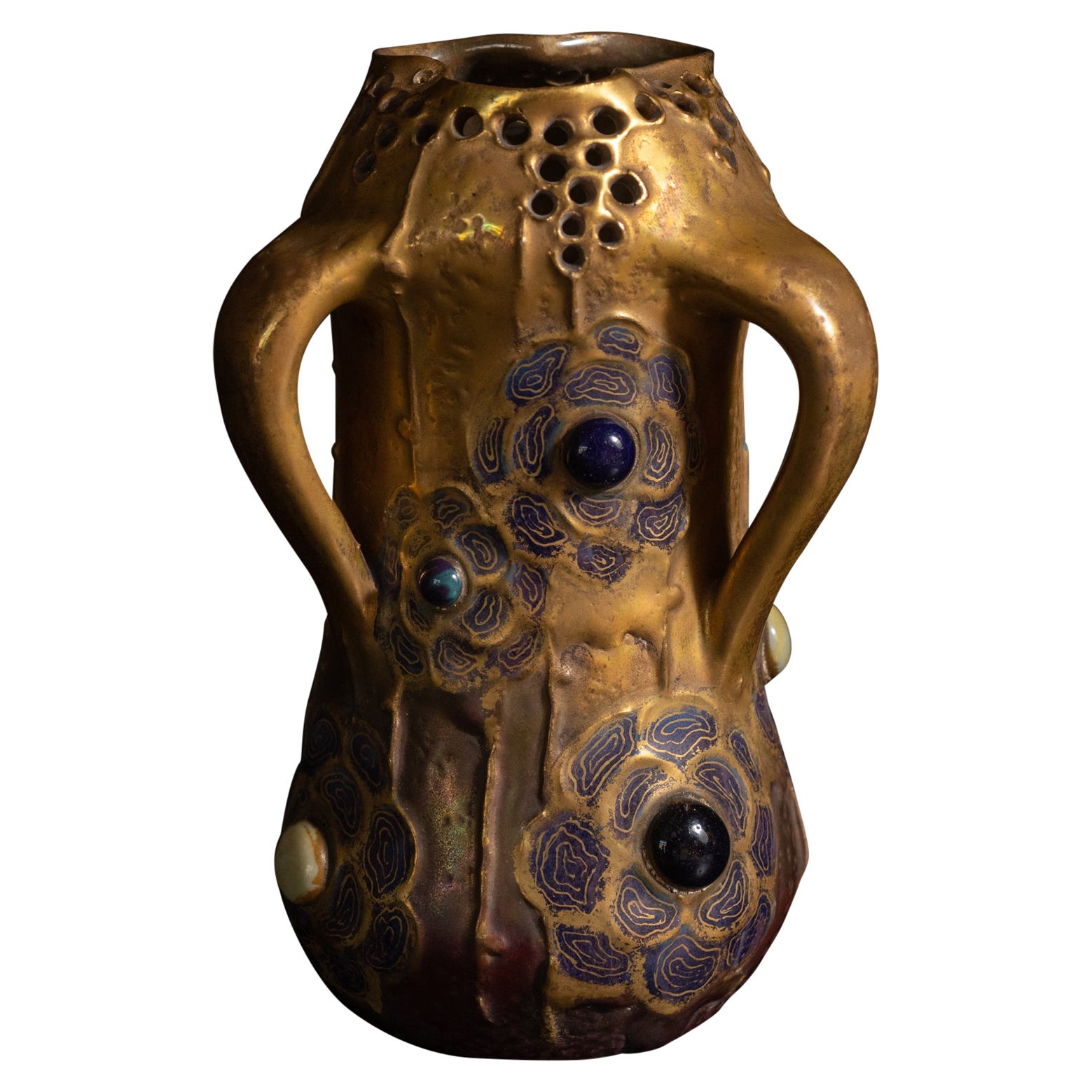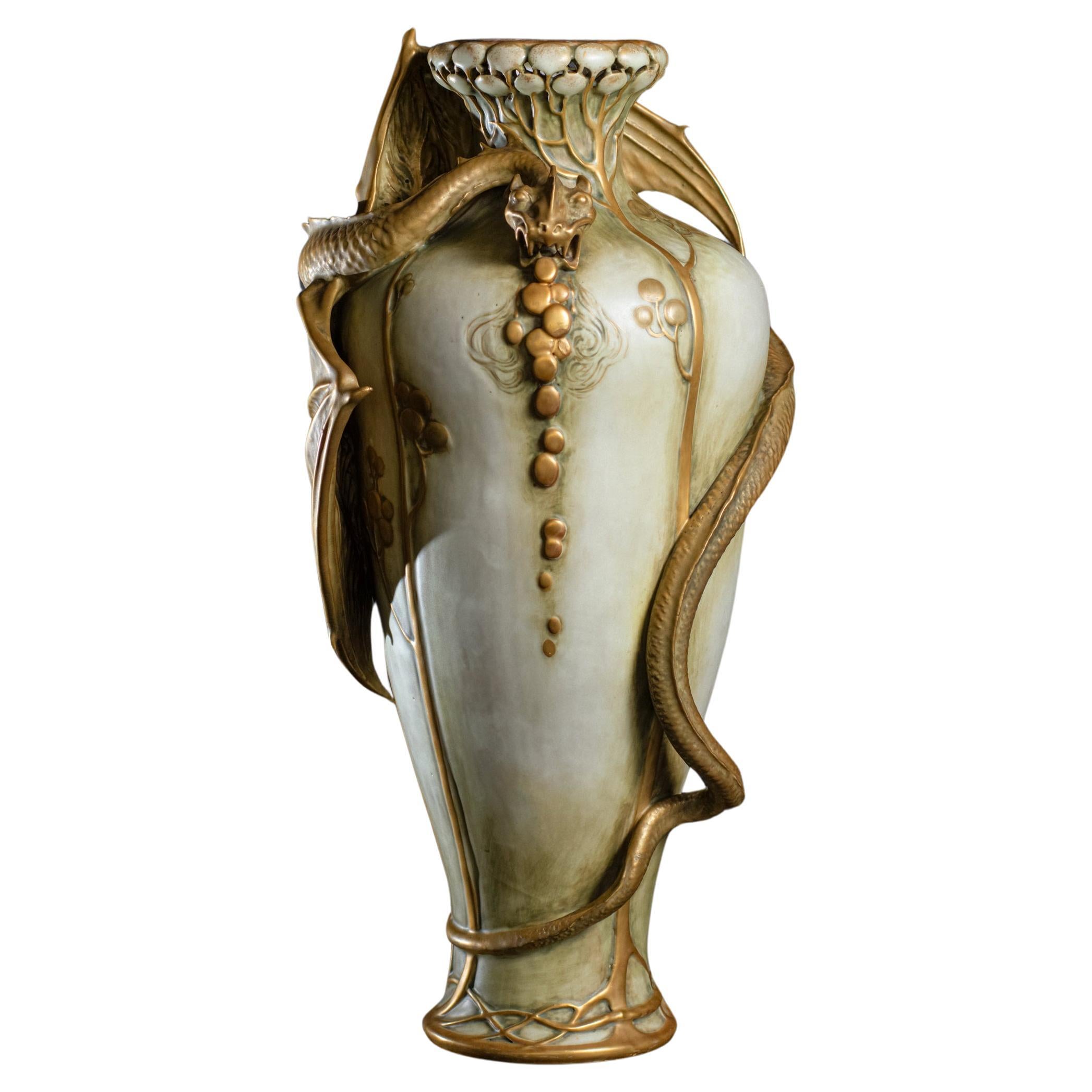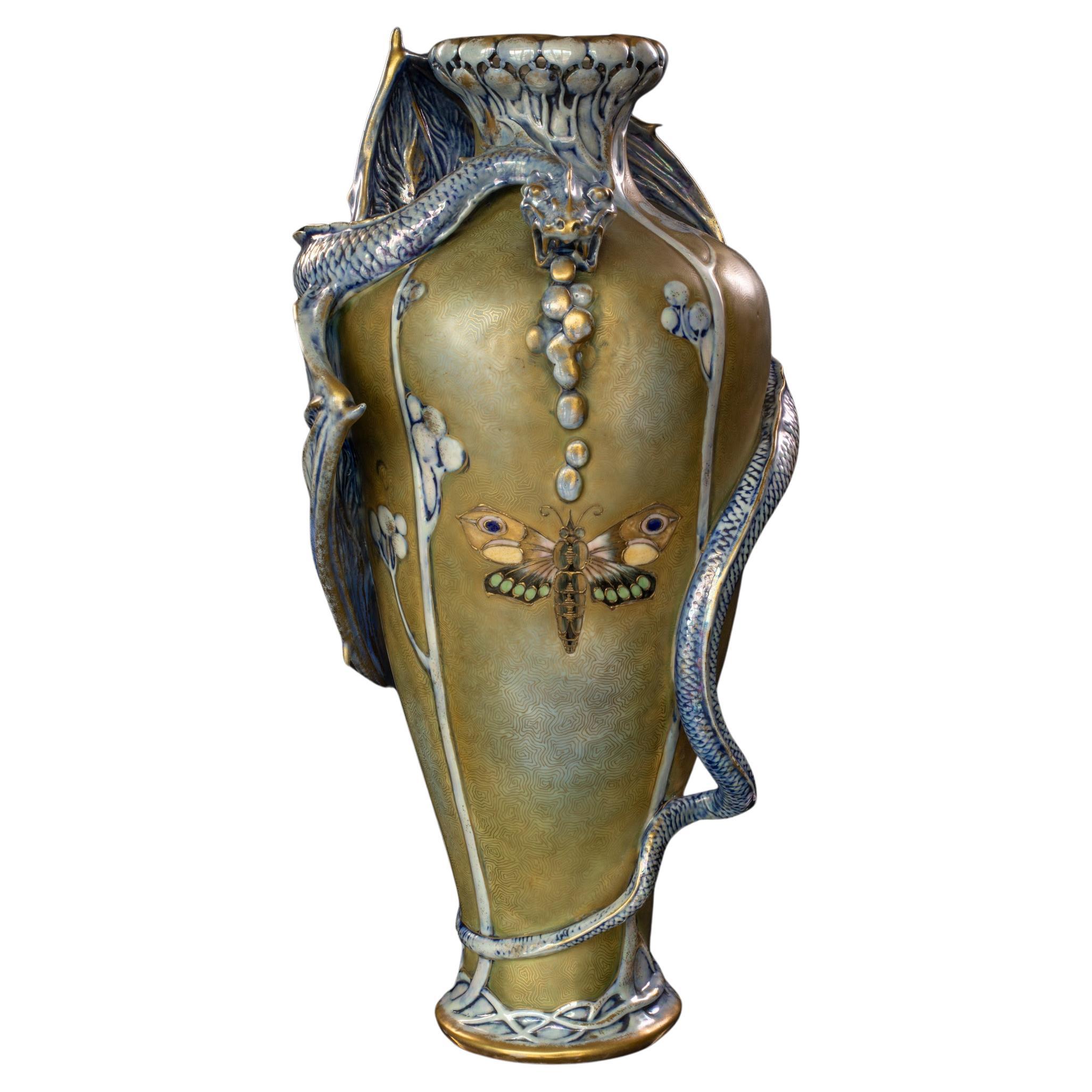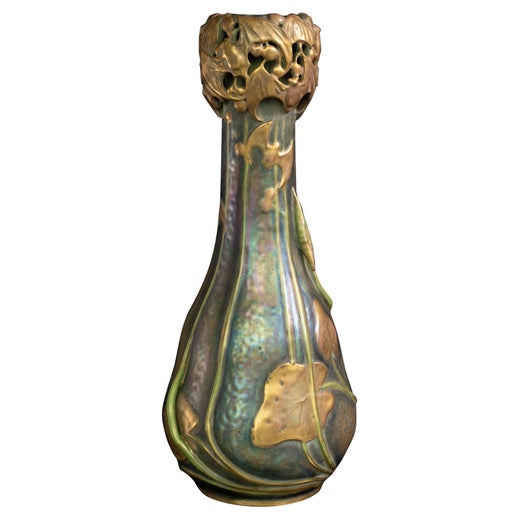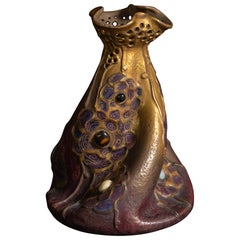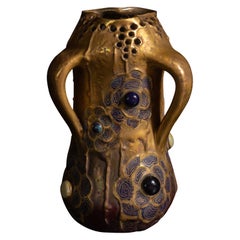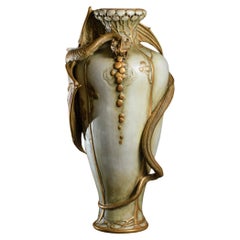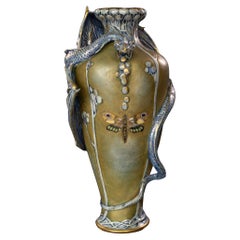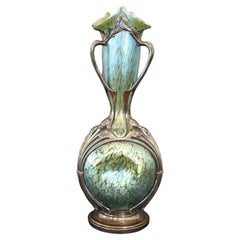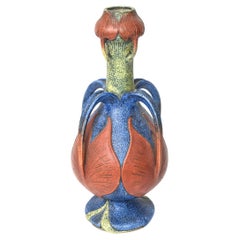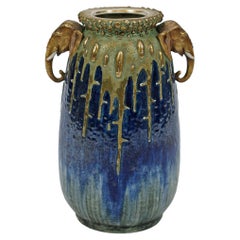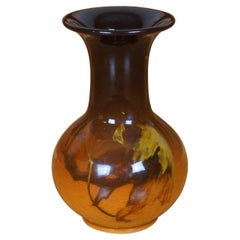Art Nouveau "Vase with Water Plants and Bats" by Paul Dachsel for RStK Amphora
About the Item
- Creator:Paul Dachsel (Designer),Amphora (Workshop/Studio)
- Dimensions:Height: 22.25 in (56.52 cm)Width: 9 in (22.86 cm)Depth: 9 in (22.86 cm)
- Style:Art Nouveau (Of the Period)
- Materials and Techniques:
- Place of Origin:
- Period:1900-1909
- Date of Manufacture:1901-1902
- Condition:
- Seller Location:Chicago, US
- Reference Number:1stDibs: LU7300241750562
Amphora
Jugendstil—the Germanic name for the sinuous, ethereal design style best known as Art Nouveau—rarely found better expression in ceramics that at the kilns of Amphora. In 1892, Austrian potter Alfred Stellmacher and four relatives opened a workshop that produced earthenware featuring plants, animals, mythical creatures, simulated jewels and even portraits in the style of Gustav Klimt and other fashionable painters of the era. Each piece was signed Amphora. The factory also produced ewers, bowls, tureens, and other diverse shapes. Located in the former spa resort town of Turn-Teplitz (now part of the Czech Republic), the Amphora factory took advantage of the abundant kaolin in the local riverbeds—as well as the energy produced by the rivers themselves—in manufacturing their arresting wares.
Amphora pieces were painstakingly produced via a method that included detailed sketches, intricate carving and molding and luminous iridescent glazing. All culminated with repeated firings of the clay—sometimes as many as ten times. As a result, the firm won worldwide acclaim, taking gold medals at the Chicago and St. Louis World’s Fairs. Its wares were sold by luxury emporiums like Tiffany & Co.
Collectors prize Amphora vases for their delicate, naturalistic designs, and larger pieces often command prices in the tens of thousands. Equally sought after are portrait busts featuring religious, literary and allegorical themes. If you’re mourning the end of Downton Abbey and you’d like to add a dash of Lady Edith’s bohemian flair to your home, an Amphora vase or bowl will serve as a unique conversation piece.
- ShippingRetrieving quote...Shipping from: Chicago, US
- Return Policy
More From This Seller
View AllAntique Early 1900s Austrian Art Nouveau Vases
Earthenware, Glass
Antique Early 1900s Austrian Art Nouveau Vases
Earthenware, Glass
Antique 1890s Austrian Art Nouveau Vases
Porcelain
Antique 1890s Austrian Art Nouveau Vases
Porcelain
Antique Early 1900s Austrian Art Nouveau Vases
Earthenware
Antique 1880s French Art Nouveau Vases
Stoneware
You May Also Like
Antique Early 1900s Austrian Art Nouveau Vases
Metal
Early 20th Century Austrian Art Nouveau Vases
Porcelain
Antique Early 1900s Austrian Art Nouveau Vases
Porcelain
Antique Early 1900s American Art Nouveau Vases
Pottery
Vintage 1930s Belgian Art Nouveau Planters, Cachepots and Jardinières
Ceramic
Antique Early 1900s Austrian Art Nouveau Vases
Porcelain
